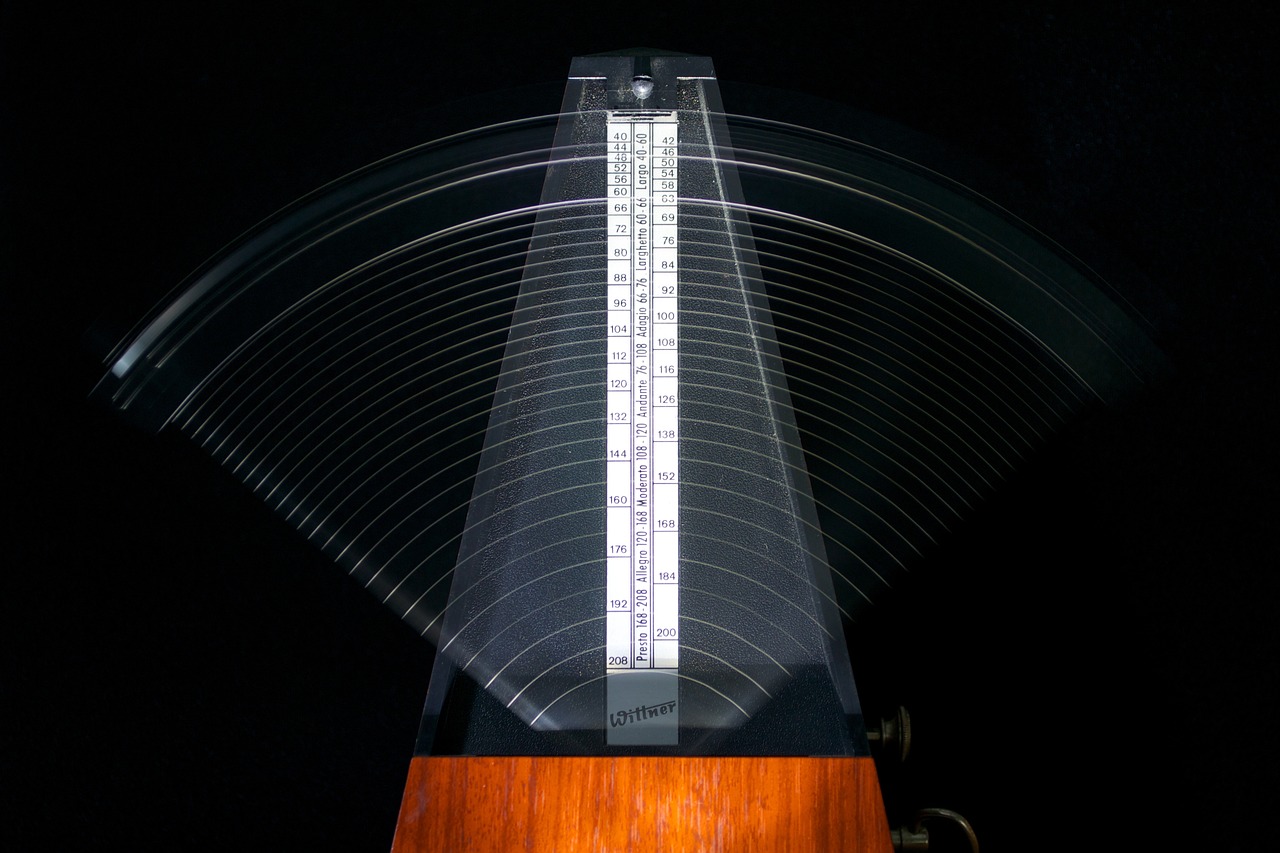Exploring the Wonderful World of Tempo!
Have you ever wondered why some songs make you want to jump up and dance, while others make you sway gently? Well, it's all about tempo! Today, we'll take a dive into the exciting world of tempo and discover what makes music move us in different ways.
Content
So, what exactly is tempo?
In simple terms, tempo refers to the speed or pace at which a piece of music is played. It's like the heartbeat of a song, giving it its unique rhythm and energy. To understand tempo better, let's start by exploring something called "pulse".
Pulse
Imagine you're sitting in a quiet room, and suddenly you start tapping your foot or nodding your head without even realizing it. Congratulations, you've found the pulse! Pulse is the underlying steady beat that runs through music, keeping everything in sync. It's what makes you feel the rhythm deep within your soul.

Metronome Marks
Now, let's talk about metronome marks. Ever seen a musician using a small device that clicks steadily? That's a metronome, and it's a fantastic tool for keeping time and understanding tempo. When you see metronome marks in sheet music, they tell you the exact speed at which the music should be played. For instance, if you see "120 BPM" (beats per minute), it means there should be 120 beats in one minute. Metronome marks are like a musical GPS, guiding performers to maintain a consistent tempo throughout a piece.

How Tempo Influences Your Emotions
Did you know that tempo has the power to affect your mood and evoke a range of emotions? It's true! The speed at which music moves can create a captivating emotional journey that resonates deep within us. Let's explore how tempo works its magic on our feelings.
Fast tempos, such as those found in energetic pop or dance music, can make you feel excited, energized, and ready to hit the dance floor. Think about those catchy tunes that instantly make you want to move your body. The rapid beats and lively rhythm create a sense of exhilaration and enthusiasm. It's like a musical adrenaline rush that lifts your spirits and gets you pumped up.
On the other hand, slow tempos have a completely different effect. Imagine a gentle ballad or a soothing classical piece. The leisurely pace and relaxed rhythm of slow tempos can evoke feelings of tranquility, introspection, and even sadness. These tempos give you space to breathe, reflect, and connect with the emotions embedded within the music. They can be incredibly therapeutic, offering solace during times of contemplation or healing.
Moderate tempos, falling somewhere between fast and slow, strike a balance that can evoke a range of emotions depending on the musical context. For instance, a moderate tempo with a catchy melody might make you feel content, cheerful, or nostalgic. It's like a comfortable groove that puts a smile on your face and fills you with warmth.
Additionally, tempo can influence the perceived character of a piece of music. A brisk tempo might make a composition sound playful or mischievous, while a slower tempo might lend it a sense of gravity or solemnity. The interplay of tempo and mood is a fascinating aspect of music that adds depth and richness to our listening experience.
Next time you listen to your favourite songs pay attention to how the tempo affects your emotions. Notice how it can make you feel happy, sad, excited, calm, or any combination of emotions. It's like a secret language that music speaks directly to your heart and soul.

Conclusion
By understanding tempo and its emotional impact, you can choose the perfect music to match your mood or even alter your emotional state. Need a pick-me-up? Crank up some lively tunes with a fast tempo. Seeking relaxation? Opt for calming melodies set to a slow tempo. The possibilities are endless!
Remember, the beauty of music lies in its ability to touch our hearts, and tempo is one of the vital ingredients that makes it all happen. Enjoy the rhythm, embrace the emotions, and let the music become the soundtrack to your soul.
If you're intrigued by tempo and want to explore it further, you might consider finding a music teacher who teaches music theory. These experts can help you understand tempo in more detail and provide guidance on how to improve your sense of rhythm and timing.
To further your knowledge about tempo, we recommend checking out our article on Italian tempo markings. These markings, like "Allegro," "Andante," and "Adagio," give performers a descriptive indication of the desired tempo and character of the music. Learning about these markings can add depth to your understanding of tempo and help you appreciate the intentions of composers. Or why not take a look at our glossary of musical terms for a comprehensive guide to helping you on your music theory journey?
Tap your feet, and let the tempo guide you on a rhythmic adventure. Whether you're dancing to the beat or playing an instrument, understanding tempo will make your musical journey even more exciting and fulfilling. Remember, it's all about finding your groove and letting the rhythm move you!
